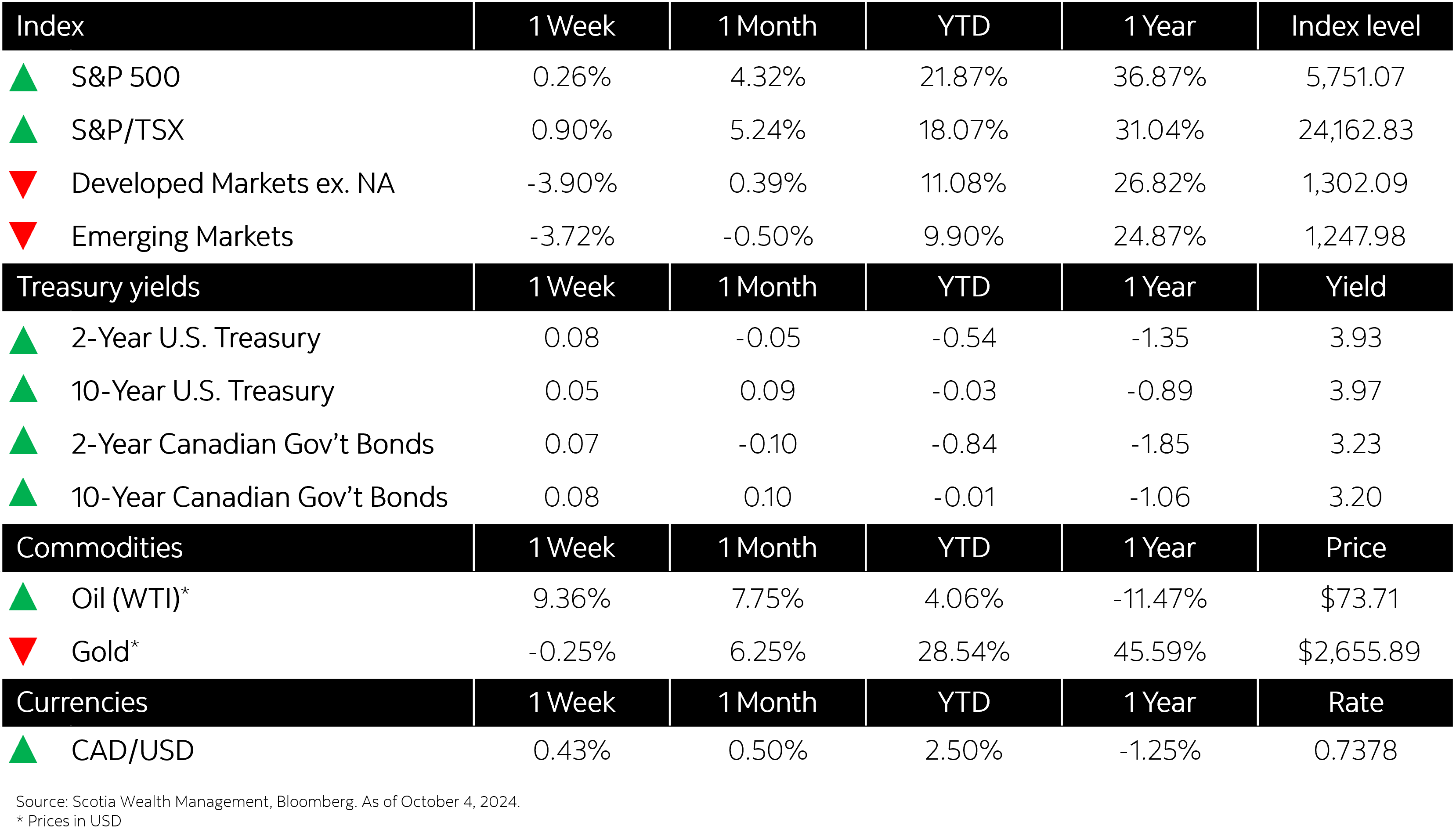
Market Watch: October 4, 2024
This week’s highlights
- Equity markets parse economic and geopolitical events
- Treasury yields inch higher amidst key data releases
- Canadian manufacturing activity strengthened for first time in 17 months
- Fed’s Powell says no need to rush rate cuts
- Eurozone inflation comes below target for first time in three years
- In the news: Port worker’s strike ends with a tentative wage agreement



